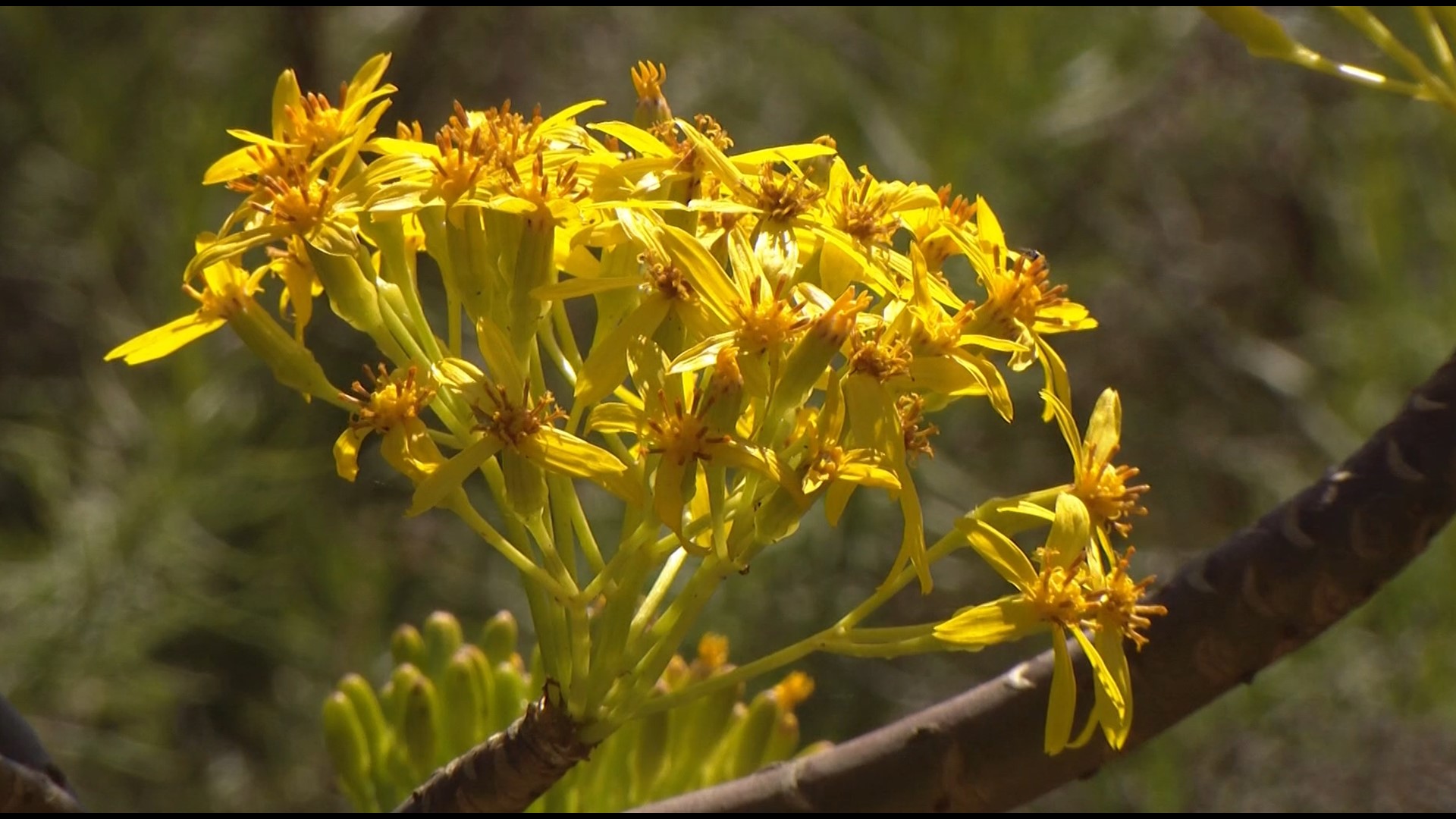ENCINITAS, Calif. — About 20 to 30 years ago, the use of medicinal plant gardens for drug research slowed down in part because there was no living collection that could be used sustainably or consistently. The San Diego Botanic Garden is working to change that through the use and study of native plants, and ultimately plants across the world.
The medicinal plant collection they have in Encinitas will serve as a tool for Western medicine. They're mixing modern technology with plant research in a first of its kind medicinal plant collection and collaboration.
"This is Artemisia Californica. This is a sage scrub. Some people would call Artemisia a Mugwort or Wormwood. This is also known, this particular species, as cowboy cologne," explained Ben Naman, Ph.D., Director of Medicinal Plant Research at San Diego Botanic Garden, as we walked through a behind-the-scenes greenhouse.
There is one part of the collection that is for research purposes and for employees only. Another part of the medicinal plant collection is open to the general public.
And while some of the plants smell good, the purpose of these budding beauties is to get you feeling good and healthy.
Over the last 200 years, medicinal plants have helped produce most of the drugs considered to be Western medicines. Willow tree bark has been used as a pain reliever, ethanol has made tinctures, and plant roots and leaves have been used for teas and topicals to apply to your skin.
Found here in San Diego, California Yerba Santa has an extensive history as a medicinal plant helping with coughs and colds.
"This is also something that is understood by the FDA to be generally recognized as safe. It's used as a flavoring substance. It's allowed to be put into foods, dietary supplements," stated Naman.
Roughly 40% of all modern drugs today are directly and indirectly extracted from plants. Unfortunately, readily available medicinal plant collections are not as plentiful. This living laboratory is unique because this collection and collaboration marks the first of its kind in the United States, made possible by a grant from The Conrad Prebys Foundation.
The focus includes medicinal plants of Indigenous people, medicinal plants of the Southwest and local San Diego flora. Meanwhile, staff implement conservation practices to sustain these plants for future research. Key partners in this collaboration include the Jamul Indian Village of California, a federally recognized Kumeyaay nation, and the Pala Band of Mission Indians, a federally recognized Cupeño and Luiseño nation.
"We have our Indigenous peoples working with us as equal partners, helping us to pick the plants that we work on, how we study them and what they are being studied for. So that they're along for the entire journey from growing the plants all the way until potential biomedical development and commercialization so they can also then benefit from that, and it is not just an extractive experience," explained Naman.
And speaking of biomedical development, this collaboration works closely with California State University San Marcos and the Salk Institute for Biological Studies. Using medicinal plants like California Yerba Santa and California Sagebrush, researchers will be monitoring changes in a plant's genes and chemical reactions from enzymes.
"Here at the Salk, we are going to be putting them under different stress conditions and seeing if maybe they make more of these medicinal chemicals that are of interest. That will turn chemical A into chemical B, and chemical B turns out to be a medicinal drug or something that people can use to improve their health," explained Todd Michael, Ph.D., Research Professor at Salk Institute for Biological Studies.
These discoveries aim to give people more options when it comes to living well.
"Right now, just taking a pharmaceutical approach maybe doesn't actually create the best living. Maybe it solves one problem but leads to another. So maybe there is a potential that this effort can really inspire other gardens across the United States or the knowledge that we build here to enable local groups to leverage the plants that they have in a medicinal way," said Michael.
And if you have a growing curiosity about medicinal plants, you can venture along the trails of the San Diego Botanic Garden and learn more about this collection through touch, smell and technology.
"You'll notice here that we've got a little indictor. It's a sort of a mortar and pestle. And as people see those walking through the garden, it's going to indicate they can take out their cell phones. It'll be on a self-guided app, which we're calling 'Story App' on our medicinal tours," explained Naman.
If the GPS is activated, the app will start talking to you and provide more information about most of the medicinal plants on display. So, you're not just taking in the sunshine in Encinitas, you're growing your knowledge of conservation and your own health.
"Biodiversity is here. It's intrinsically important to the environment. But it is also useful for people. We can't think of nature as existing outside of humanity or humanity existing outside of nature," said Naman.
WATCH RELATED: The Water Conservation Garden explains benefits of drought tolerant plants (Apr 26, 2022)

